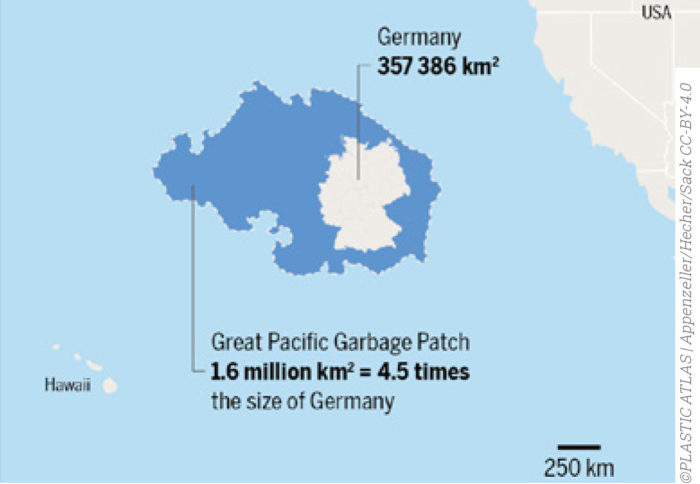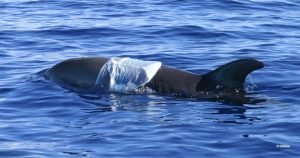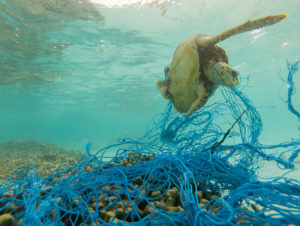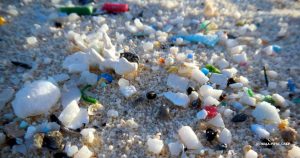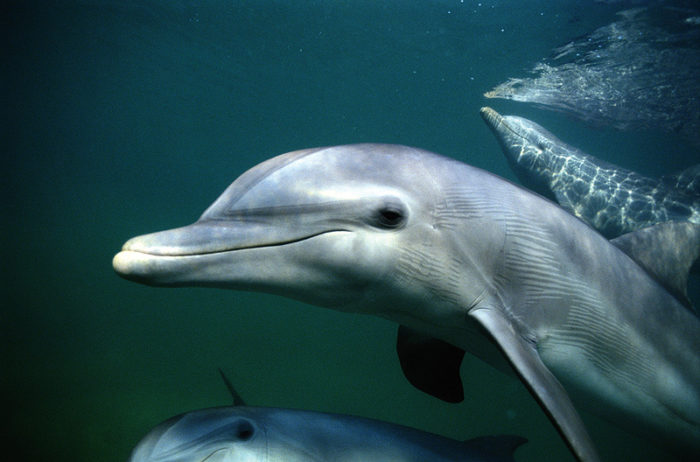Our work to fight plastic pollution
EIA advocates for change to fight plastic pollution at global, Regional (EU), and national (UK) levels. Our work involves carrying out research, raising awareness, joining forces with other NGOs who share our vision for a just circular economy for plastics and keeping up the pressure on governments and businesses to end single-use plastic, curb production and cut plastic pollution.
Working to secure a new global agreement on plastic pollution
Preventing plastic pollution will require a dedicated global framework, a Convention on Plastic Pollution, that addresses the full lifecycle of plastics from production and design to waste prevention and management. We need a Convention that builds upon and complements existing national and regional initiatives while otherwise addressing the significant gaps that exist that currently prevent us from eliminating plastic pollution and creating a non-toxic circular economy for plastics.
Since 2017, EIA have been campaigning to secure an international treaty to regulate plastics. On 2nd March 2022 at the 5th UN Environment Assembly (UNEA), it finally became a reality when the Assembly adopted the resolution entitled ‘End plastic pollution: Towards an international legally binding instrument’. This has widely been heralded as the most important environmental agreement since Paris and has everything required to negotiate an impactful and binding treaty that regulates the full life cycle of plastics. Formal negotiations will begin in 2022 with a view to completing by the end of 2024.
We have developed what we call a ‘thought starter’ on the elements and design of a Convention to inform the policy debate, and a series of ‘Essential Elements’ papers that take a deeper dive into specific elements of the treaty, including topics such as fishing gear and finance.
Briefing the International Whaling Commission on marine debris
In 2012, EIA’s Dying for our Convenience report found that an increasing number of cetacean species (whales, porpoises and dolphins) were being affected by marine debris. A conservative estimate at that point was that more than 100,000 marine mammals were dying from ingesting or becoming entangled in plastic debris such as abandoned fishing gear and netting.
“Almost daily we are confronted with gruesome pictures of whales’ stomachs blocked by plastic bags and dolphins entangled by discarded fishing gear. We’ve seen a huge rise in awareness of the horrific impacts of plastic pollution on marine animals so it’s critical that we galvanise the momentum on this issue to drive tangible action to protect our oceans. A core part of our strategy is bringing the science to the policy-makers and ensuring that the robust case for tackling plastic pollution informs the national, regional and international political agenda.”
Christina Dixon, Senior Ocean Campaigner, EIA
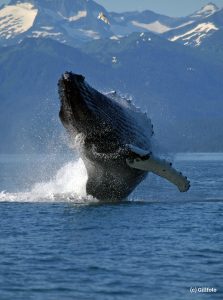
Adult Humpback Whale breaching
The report made a number of recommendations which we subsequently presented to the Scientific Committee of the International Whaling Commission at a meeting in Panama.
As a result, for the first time, the International Whaling Commission organised Marine Debris Workshops, bringing together relevant experts to gain a better understanding of how marine debris was affecting cetaceans and how best to monitor and mitigate these impacts, with EIA offering expert advice on the impacts of plastic pollution.
Through our ongoing campaign to protect whales, dolphins and porpoises, we continue to address the severe threats to cetaceans and marine ecosystems created by human activities, including plastic pollution.
Helping secure an EU agreement to reduce single-use plastic bags
The average plastic bag is used for just 12 minutes before being discarded.
In 2014, our work on plastic bags helped achieve an EU agreement to reduce the use of single-use carrier bags.
“The plastic bag has become a symbol of our throwaway culture, a visual blight on our landscape – littering roadsides, choking waterways and polluting oceans. Non-degradable, rarely recycled and of no cost to consumers, plastic bags are widely disposed of after just a few minutes’ use. What’s more, the same properties that make them commercially successful – their low weight and resistance to degradation – contribute to their accumulation in the environment”.
Sarah Baulch, EIA senior ocean campaigner (2015)
We joined together with 22 other European NGOs, including Friends of the Earth Europe, the Plastic Soup Foundation and Seas at Risk, to produce a statement on the European Parliament’s draft report on plastic carrier bags.
In tandem, we led a campaign to encourage the public to tell their MEPs that killing marine life with plastic waste is unacceptable.
Our campaign highlighted that:
- millions of marine mammals, birds, turtles and fish die every year as a result of entanglement or ingestion of man-made litter;
- plastic bags are the third most common type of litter found on European beaches, lakes and rivers. In 2010, more than eight billion plastic bags needlessly ended up as litter in Europe;
- used for just a few minutes, plastic bags last for centuries in the marine environment.
The EU agreement was good news for everyone committed to binning plastic bags in Europe. However, our fight carried on, as the UK Government continued to oppose concrete, binding European targets to reduce single-use plastic bags.
As a mandatory 5p charge for plastic bags came into effect in England in 2015, we released a new report, Lost at Sea: The urgent need to tackle marine litter. It called on governments, industry, retailers and consumers alike to help end the appalling damage that plastic waste inflicts on marine environments.
Achieving a world-leading ban on microbeads in the UK
As an environmental charity campaigning against plastic pollution in our oceans, we have consistently lobbied for a ban on microbeads.
Microplastics are tiny plastic particles less than 5mm in size. They are widely used in ‘down the drain’ products such as facial scrubs, toothpaste, sunscreen and washing powder.
There are currently up to 51 trillion microplastic particles floating at the ocean surface. Eliminating microplastics at source is the only solution.
They’re so small that they cannot be captured by filters, so they end up in the oceans where they become magnets for toxic chemicals and can harm marine life.
In 2016, the UK Government announced it would lobby the EU for a Europe-wide ban on microbeads. However, we thought this proposal didn’t go far enough, as it didn’t cover all solid microplastics in consumer products.
In 2017, together with Flora and Fauna International, Greenpeace and the Marine Conservation Society, we formed a Microbeads Coalition which lobbied the UK Government to extend its proposed ban on microbeads to cover washing powders and floor cleaners as well as products such as face scrubs and toothpaste.
Following pressure from the Microbeads Coalition, we were delighted when the UK Government’s ban on plastic microbeads officially came into force in January 2018. This world-leading ban on microbeads in cosmetics and personal care products will prevent countless billions of microplastic particles from entering our seas every day.
Successfully lobbying the EU to cut single-use plastics
After months of negotiations, in December 2018 the European Union finally agreed new legislation to slash single-use plastics.
This move took place following intensive lobbying by the Rethink Plastic and Break Free From Plastic alliances, of which we are a member.
The final measures adopted include:
- bans on several single-use plastic items including plates, cutlery, polystyrene food containers and beverage cups;
- ensuring manufacturers pay for waste management and clean-up of several single-use plastic items, including cigarette butts and fishing gear;
- the requirement for EU Member States to set national collection targets for fishing gear.
This is an excellent step forward towards a world with cleaner oceans. Despite industry interests working behind the scenes to water down the legislation, the EU has nevertheless still made an advance in the fight against plastic pollution which should inspire other countries to follow suit.
Exposing the massive plastic footprint of UK supermarkets
In November 2018, we revealed the full extent of UK supermarket giants’ contribution to the plastic waste problem in our landmark report Checking Out on Plastics.
We repeated the same report in 2019 and 2020 to keep track of supermarkets progress and hold them accountable to their commitments. Following our initial survey, retail giants started to pick up the pace on actions to limit plastic pollution.
However, comparing plastic footprints between our first and third reports shows that in fact, the 10 major UK supermarkets have increased their plastic packaging by 1.2% between 2017 and 2019 – amounting to a total 896,853 tonnes on the market in 2019 alone.
“It is abundantly clear that we cannot simply recycle our way out of the plastic pollution crisis and yet this remains the priority area of focus for many major chains. Retailers must pioneer new ways to reduce their plastic footprint across the entire supply chain”.
Christina Dixon, EIA Deputy Campaign Leader (2021)
Our recommendations are not just with regards to packaging, but also for a phased reduction of ‘bags for life’ as a continuous rise in sales suggested some consumers are simply switching from using single-use plastic bags to using the thicker plastic bags for life in a way that is single-use, which contain far more plastic by weight.
Together with Greenpeace, we are continuing to keep up the pressure on UK supermarkets and demand that they take action to reduce their consumption of plastic packaging. This includes taking further steps forward with regards to targets, objectives for both brand and own brand products in addition to pushing for expansion of reuse and refill systems that go beyond trial-stage.
Helping achieve EU legislation to stop marine plastic pollution
Mismanaged waste from ships accounts for approximately 32 per cent of marine plastic pollution entering EU waters each year. This includes old fishing nets that impact on biodiversity long after they are lost or discarded.
For two years, we carried out a campaign for a wide-ranging revision to the Port Reception Facilities Directive, the primary European Union legislation that governs waste management of ships and at ports.
We argued that it was vital to restructure port fees across the EU to remove incentives to illegally dump marine rubbish at sea in order to reduce costs at port.
We were delighted when EU negotiators agreed a revision to the directive in December 2018. This represents a significant milestone in the struggle against marine plastic pollution.
Tackling the global problem of ‘ghost’ fishing gear
Following our success in achieving tighter EU legislation on marine plastic pollution, we are now actively working to leverage these measures at a global level.
“Ghost gear, also known as ‘abandoned, lost or otherwise discarded fishing gear’, is the deadliest form of marine debris, responsible for entangling marine wildlife and depleting fishing stocks around the world.”
Christina Dixon, EIA Senior Ocean Campaigner (2020)
While approximately 80 per cent of marine plastic pollution originates from land – such as plastic bottles, bags and packaging – the remaining 20 per cent comes from sea-based sources, including plastic from fishing boats, shipping, offshore industries and tourism.
Of all the sea-based sources of marine plastic pollution, the most common, and also the most harmful, is lost and discarded fishing gear, also referred to as ‘ghost gear’. It accounts for approximately 10 per cent of global marine plastic pollution.
Perched on the banks of the River Thames, the International Maritime Organization, created in 1948, is the primary international body dealing with maritime safety and security, marine pollution and shipping. Yet, despite its acknowledgement of shipping’s contribution to plastic pollution, momentum to adequately address this issue has been woefully lacking.
Our report, Nothing fishy about it: Meaningful measures on fishing gear at IMO, outlines how the International Maritime Organization can address ghost gear in its new action plan which focuses on ‘Marine Plastic Litter from Ships’.
Building regional momentum for a new global agreement
Regional champions will be a critical component of securing a global convention on plastic pollution. In partnership with the Centre for International Environmental Law (CIEL) and Massey University, EIA is working in South Pacific and African regions to foster support for a new convention and identify needs and expectations of what a global convention could deliver for their respective regions.
To serve this objective, we have developed a briefing entitled Islands of Opportunity: Toward a Global Agreement for Pacific Islands Countries and Territories which makes the case for how and why Pacific islanders are disproportionately affected by plastic pollution and how a global convention is the only credible remedy.
Striving to severely restrict the global trade in plastic waste
The aim of our campaign on the transboundary trade in plastic waste is simple – to severely restrict and phase down the international trade in scrap plastic, ensuring that it is consistently managed in an environmentally and socially responsible manner.
To enact this vision, we continue to advocate for tighter controls on the global trade in plastic waste at the Basel Convention. In May 2019, amendments were adopted which mean that, as of January 2021, plastic waste that is difficult-to-recycle will need to receive clear consent before being imported into receiving countries. While these amendments are an important step in the right direction, they are by no means perfect. They will still allow for Global North countries to dump difficult-to-recycle plastic waste in the Global South, where there is often not the infrastructure and capacity to appropriately manage it.
At the regional level, we are advocating for revisions to the European Union’s Waste Shipment Regulation which would ban plastic-waste exports to non-EU countries and introduce stringent measures for intra-EU trade.
How to reduce your plastic footprint


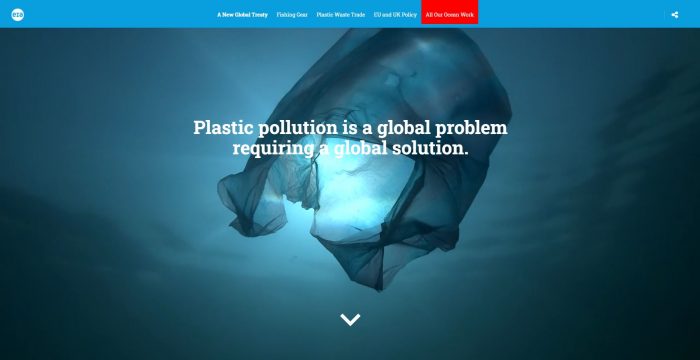
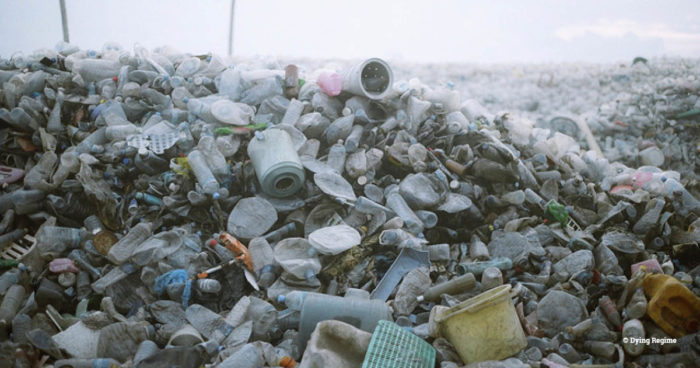
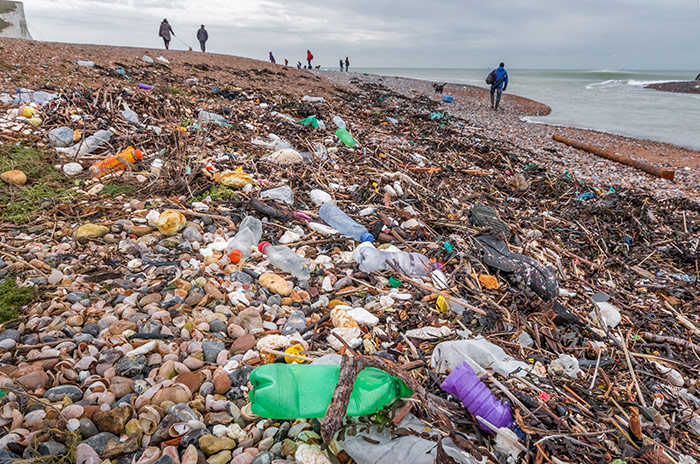 Plastic pollution can now be found
Plastic pollution can now be found 